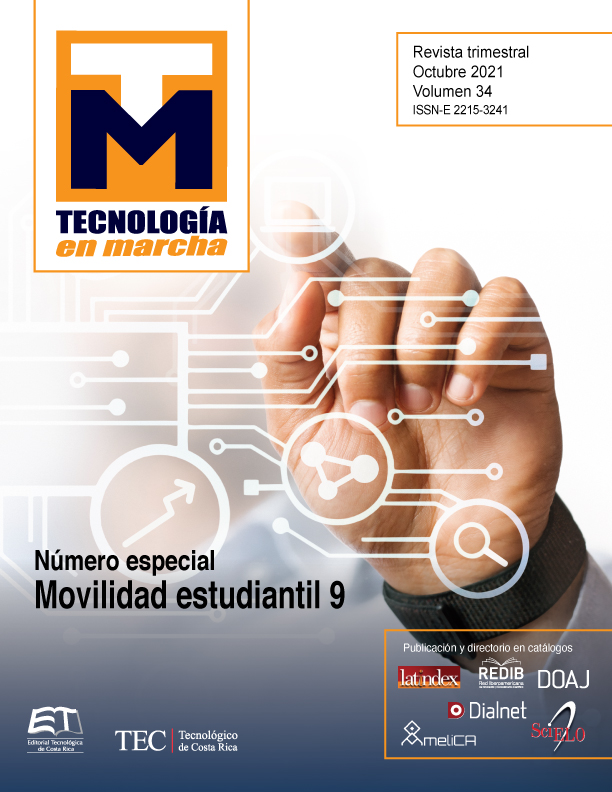Relationship between grip and pinch force with isometric dynamometry and musculoskeletal disorders in the Bogota, Colombia adult population
Main Article Content
Abstract
Having a healthy work environment has become a major challenge for most companies. Within the efforts to promote safe work established by the World Healthy Organization (WHO), they are the adequate job design, the knowledge of the main limitations of the employees, therefore the study of physical capacities and abilities, such as maximum grip strength and lateral and palmar grip has become an interesting topic in consequence the high rate of occupational disease in the Bogota adult population.
This paper points out the statistical relationship between grip and pinch force and aspects such as gender, age; and neck, shoulder, middle arm, elbow, and forearm injuries suffer by the workers of the Colombian Institute of Family Welfare (ICBF). It was done throughout a crosssectional correlational study, where a 317 participants’ population was included, of them: 204 women and 113 men between the ages of 18-57. As result it was obtained that there is not statistical correlation between right- and left-hand grip force, considering that the p value=0.006 is less than the alfa value = 0.05. Likewise, it happens with the pinch force, where the p = 0.01 is less than the alfa value=0.05. When analyzing the statistical correlation between grip force and pinch (palmar and lateral) force it was obtained, as a statistical difference between men and women was obtained. Finally, it was analyzed its correlation with different disorders of the musculoskeletal system.
Article Details

This work is licensed under a Creative Commons Attribution-NonCommercial-NoDerivatives 4.0 International License.
Los autores conservan los derechos de autor y ceden a la revista el derecho de la primera publicación y pueda editarlo, reproducirlo, distribuirlo, exhibirlo y comunicarlo en el país y en el extranjero mediante medios impresos y electrónicos. Asimismo, asumen el compromiso sobre cualquier litigio o reclamación relacionada con derechos de propiedad intelectual, exonerando de responsabilidad a la Editorial Tecnológica de Costa Rica. Además, se establece que los autores pueden realizar otros acuerdos contractuales independientes y adicionales para la distribución no exclusiva de la versión del artículo publicado en esta revista (p. ej., incluirlo en un repositorio institucional o publicarlo en un libro) siempre que indiquen claramente que el trabajo se publicó por primera vez en esta revista.
References
A. Guerrero y K. Diaz, «Caracterización del ausentismo laboral por causas médicas en una empresa de alimentos de la ciudad de Bogotá D.C 2013-2014,» Universidad del Rosario, Bogotá, 2016.
CESLA, «Tercer Informe de seguimiento sobre ausentismo laboral e incapacidades médicas,» Medellín, Colombia, 2019.
OMS, «Organización Mundial de la Salud,» 9 Agosto 2019. [En línea]. Available: https://www.who.
int/es/news-room/fact-sheets/detail/musculoskeletal-conditions#:~:text=Como%20se%20indica%20en%20 la,asociados%20como%20tendones%20y%20ligamentos.
C. Ordónez, E. Gómez y A. Calvo , «Desórdenes músculo esqueléticos relacionados con el trabajo,» Revista Colombiana de Salud ocupacional, p. 26, 2016.
S. Malca Sandoval, «Trastornos musculoesqueléticos de origen laboral en el cuello y las extremidades superiores de los fisioterapeutas en Cataluña,» 2017. [En línea]. Available: https://www.tdx.cat/bitstream/handle/10803/420862/Tsms1de1.pdf?sequence=2&isAllowed=y. [Último acceso: 05 Septiembre 2017].
C. Zea, M. P. Caro y L. A. Quintana , «LA. Análisis de la disminución de fuerza de agarre en la mano por uso de guante en actividades de aseo y cafetería.,» Revista de ciencias de la salud, p. 383, 2016.
M. V. Monrroy Silva, C. Zea y C. Reales, Interviewees, Relación entre la Fuerza de Agarre y Pinza con Dinamometría Isométrica y los desórdenes músculoesqueléticos en la población adulta de Bogotá. [Entrevista]. 2019.
P. López Roldan y S. Fachelli, Metodología de la investigación Social Cuantitativa, Barcelona: Universidad Autónoma de Barcelona, 2015, p. 5.

